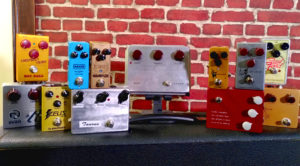
Klon or Klones? A legend under the lens
Few pedals exist out there whose legendary status and hype have peaked as high as that of Klon’s Centaur overdrive. This pedal, worth a couple
Everyone knows that electric guitars and guitar amplifiers are as much an inseparable duo as Batman and Robin – plug the former into the latter and legendary tones are just a few strokes away. Hit those same six strings when the guitar is on its own, though, and… well, not so much.
The secret to this magic is enclosed in your guitar’s pickups: those compact, rectangle-looking parts encased on the front of the body just under the strings.
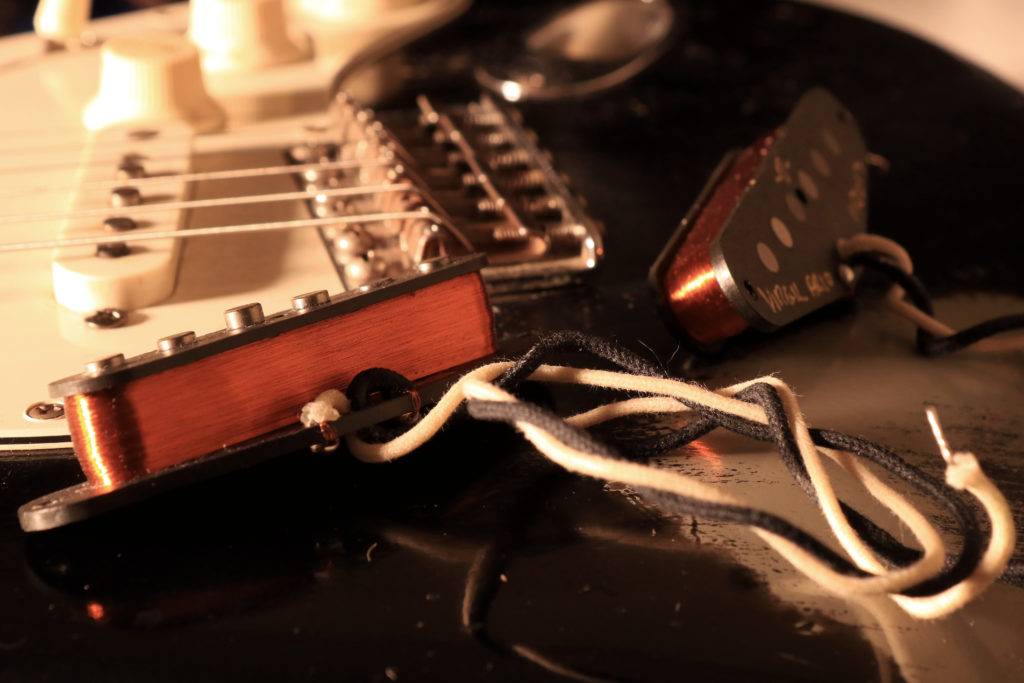
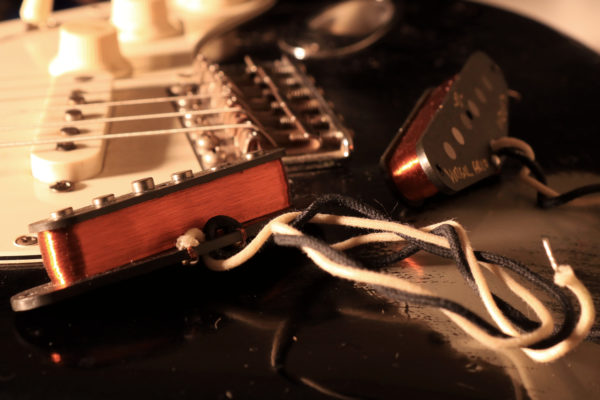
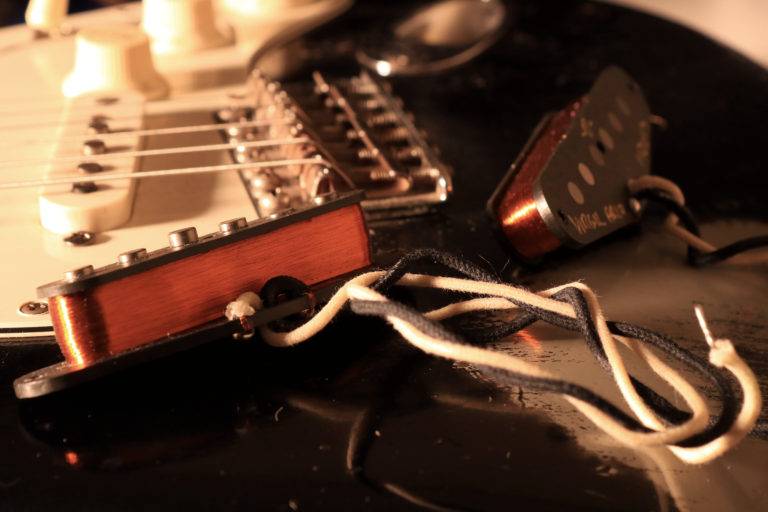
Pickups are simple but clever devices based on the principles of magnetic induction. What a guitar pickup does can be conceptualized as a relatively simple translation of energy from one form to another: a pickup literally “picks up” the disturbance created just above its surface by the vibrating strings, and transforms it into an electrical signal. The signal is then ready to travel to the amplifier, where it will ultimately undergo the opposite transformation, and be reverted to vibrations in the speaker cabinet.
To understand the details of this process we need a longer answer. So let’s have a better look at how pickups are constructed, and at the physics behind them.
As mentioned above, electric guitar pickups are based on the principles of electromagnetic induction. These were discovered by Michael Faraday in 1831 and state, in short, that if you have a magnet and a coil of wire, and you move either of them in relation to the other, electrical current will start running through the coil.
This happens because moving the magnet in relation to the coil (or vice versa) changes the amount of strength that the magnet’s magnetic field exercises on the metal wire – think about moving your latest summer vacation magnet towards and away from a fridge.
Meanwhile, because the wire is also an electrical conductor, charged particles start moving around, in the attempt to create a magnetic field opposed to that of the magnet, to try to reach a new balanced state. This movement of the particles is the electrical current.
Following the principles just explained, all guitar pickups consist of three main components: a magnet, a coil of wire, and a structure that puts them in relation to one another.
So let’s look under the hood and find out how such a small device can become the signature to your sound. Meanwhile, you can start comparing different pickups and their sound in the player just below – each type will be discussed in detail a bit later!
Starting off simply, the bobbin is the structural component of a pickup, sometimes visible on the surface of your guitar body, though more often than not hidden by a cover.
Bobbins commonly consist of two plates: rectangular, oval, or trapezoid-shaped.
These are made of materials such as molded plastic or compressed paper fiber – all of which are non-conductive to electricity. Because of this characteristic, the bobbin doesn’t have an active role in the creation of a guitar sound. Instead it supports the wire tightly coiled around it, and encases the magnetic part(s) of the pickup, allowing them to interact with one another and accomplish the transformation from mechanical (string vibrations) to electrical energy.
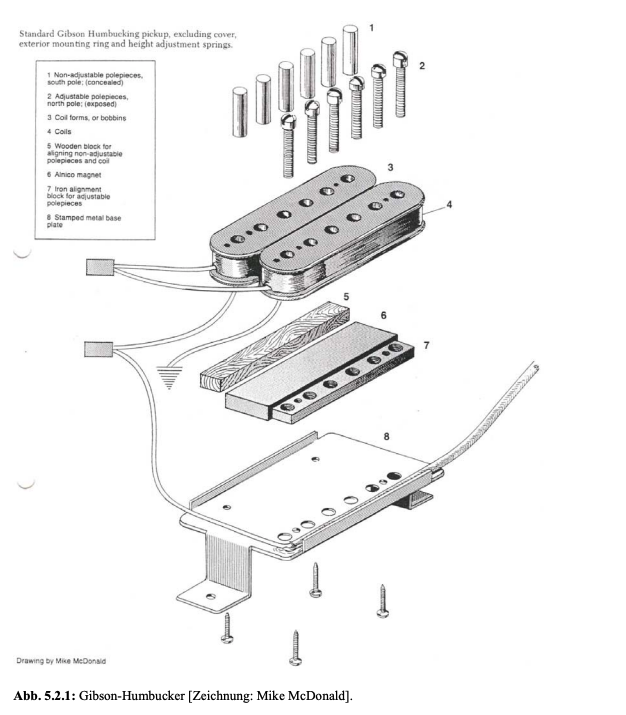
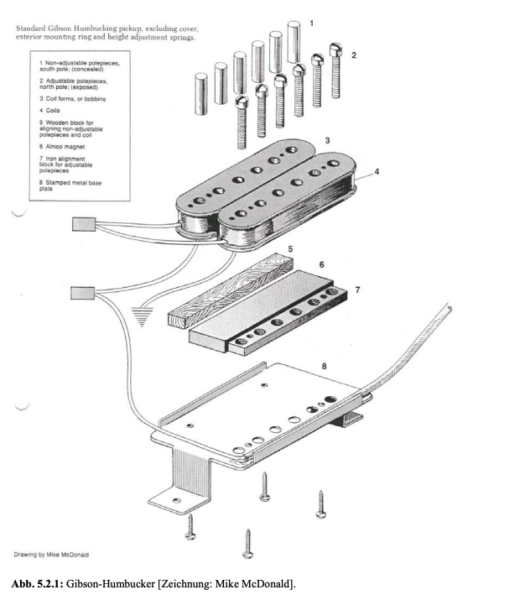

The magnet of a pickup is one of the two main parts that play an active role in creating a guitar sound. Guitar pickups use ferromagnetic magnets, meaning materials which, once magnetized, maintain their magnetic field indefinitely.
Most pickup producers prefer alnico for their designs, followed by ceramic and, more rarely, neodymium. Each of these confers different qualities to a pickup specific tonality and performance, we will have a look at them in the next section.
In terms of shapes and construction, there are three main designs used for pickup magnets:
In all the above cases, the magnet will interact with the guitar strings by magnetizing them. In turn, the strings’ vibration will affect the magnetic field around the coil, and cause the consequent electric current in the wire.
The greater the magnetization of the strings, the bigger the current and therefore louder the sound produced.
Take a look at the video below:
Guitar pickups coils usually consist of thousands (normally between 5.000 to 9.000) of winds of coated, super thin copper wire wound either directly around the magnet(s) or around the bobbin structure. How many times a pickup is wound, as well as the thickness of the wire, and the distance kept between its single strands, are all things that directly affect the pickup performance and its tonal qualities. This is discussed more in-depth in the section below.
Two techniques are used to wind the wire around the pickup structure:
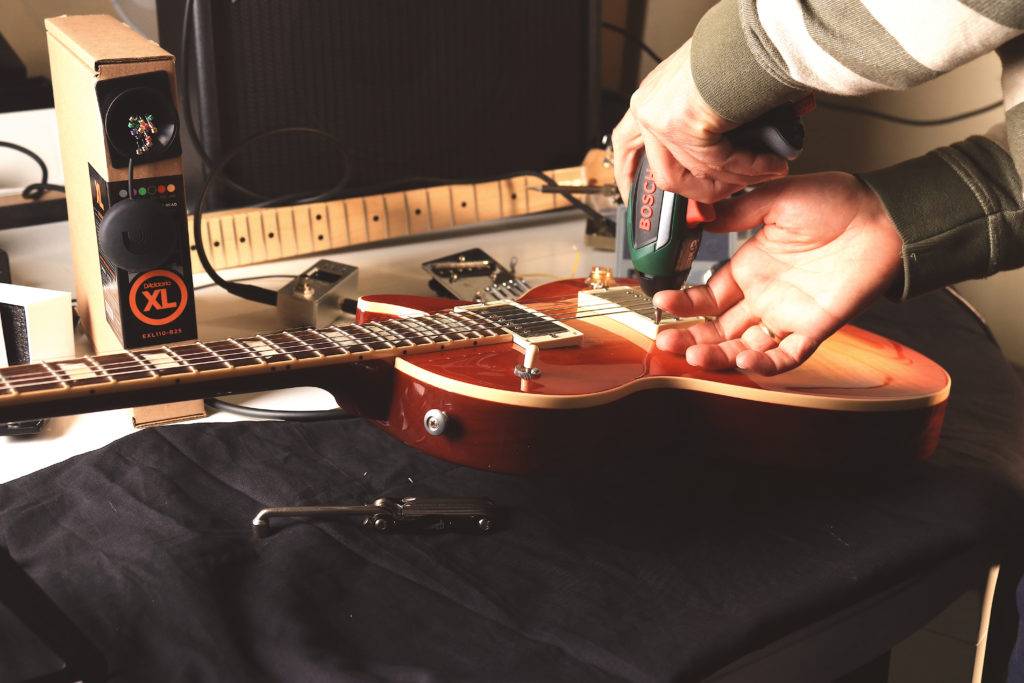
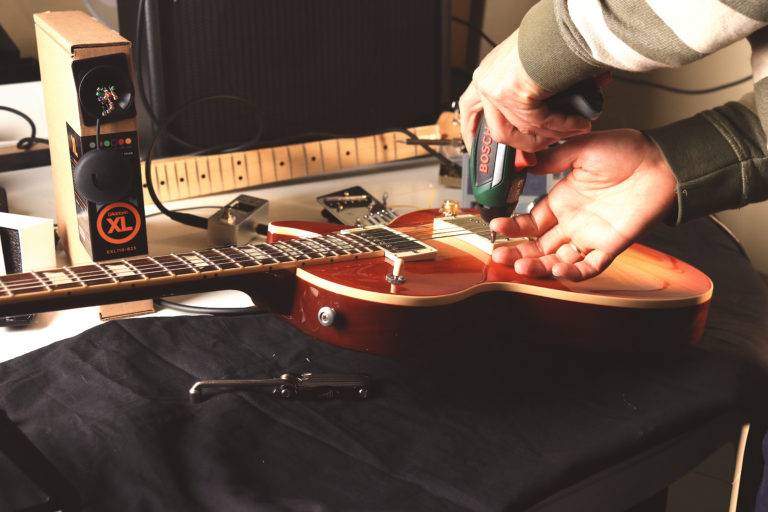
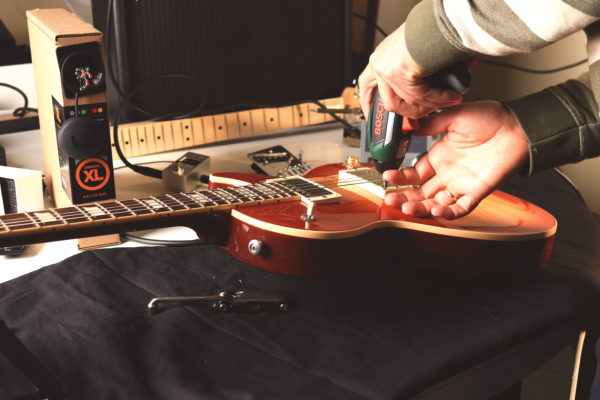
In either case, the resulting coil will work on the same principles. The magnetized guitar strings will vibrate over it and cause a changing magnetic flux, resulting in an alternate current flow in the coil. The direction of the current in the coil will be inverse to that of the magnetic field movement at any given moment. The more the kinetic force impressed on the string – that is, the harder you strike that chord – the more the current and therefore the louder the output.
Additionally, the electric current will also increase proportionally to the speed at which the strings are moving. Because higher sound frequencies are caused by faster vibrations and lower frequencies by slower vibrations, each frequency content will cause a relative vibration-induced current in the coil, making it possible to faithfully translate the sound into an electrical “message” at the output of the pickup.
Within the general construction design of a pickup, there are however a few setups and built variations that can significantly alter its sound – let’s see which ones and how they can be exploited to achieve your favourite tone.
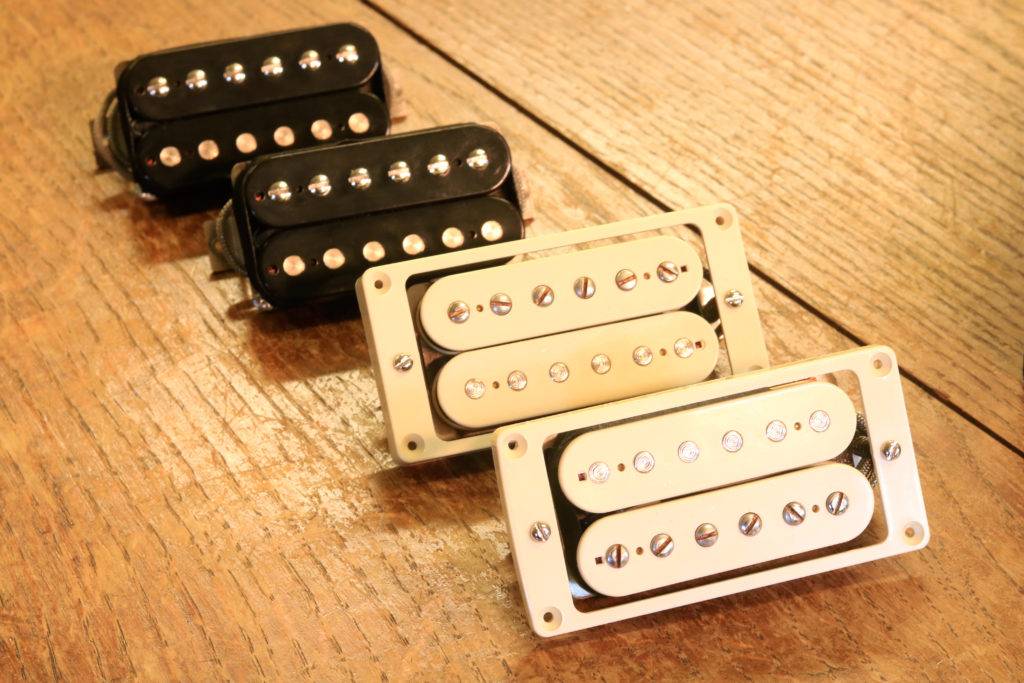
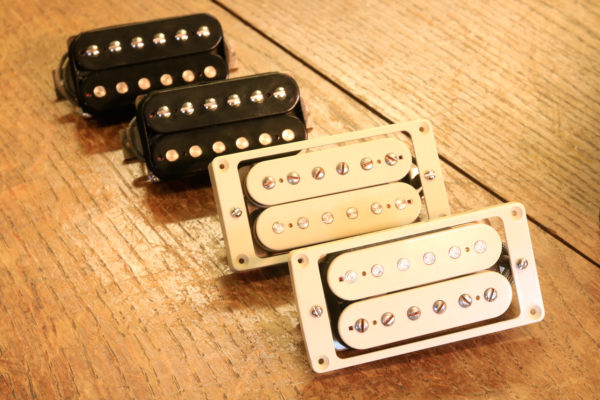
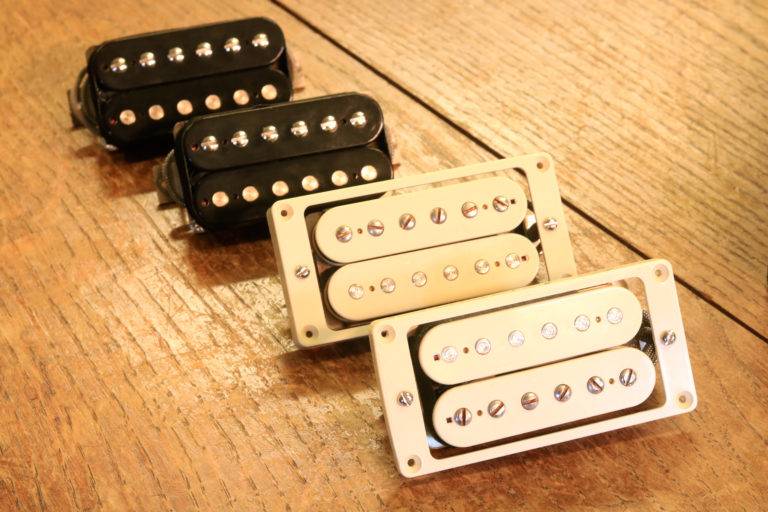
Starting with the more obvious differences, the placement of a pickup will have an impact on the pickup overall performance and tone. This is because vibration is not consistent over the length of a string.
Simply try moving a pickup up and down between the neck and bridge areas to see this for yourself. This causes the well-known differences in tone that anyone playing a guitar with multiple pickup positions has experienced.
For this reason, pickup systems with more than one pickup position are often preferred for their versatility. However, single pickup guitars have one big advantage: they avoid any interference on the strings caused by additional magnets, which results in the strings vibrating more freely in the critical area where the only pickup is placed, and therefore in a stronger output and better frequency content translation.
As already mentioned, the most common types of material used for the magnets of guitar pickups are Alnico and ceramics.
Among these two, ceramic is the less expensive type, but also the stronger material. For this reason, it is sometimes preferred in the build of “hot” pickups, that is, pickups capable of a very high-level output.
Hard rock and metal musicians often prefer this type of pickup, whose tonal character is usually a bit harsh on a clean guitar, but offers enhanced articulation when playing high-gain sounds.
On the other hand, Alnico is an alloy material, composed primarily of Al (Aluminum) Ni (Nickel) and Co (Cobalt).
It can sometimes contain additional elements (such as copper or titanium) and is available in eight different subtypes, each one conveying distinct qualities to the final sound through specific properties.
Among these, types 2 & 5 are the most widely used in guitar pickups. Alnico 5 offers a medium to high output as well as an EQ curve characterized by tight low end and clear highs, while type 2 has a softer low end but more attack in the highs, and is often associated with vintage guitar sounds.
Type 6 and 8 produce darker, mid-rangy tones with a very high output, and are often preferred for metal, hard rock, and prog sounds.
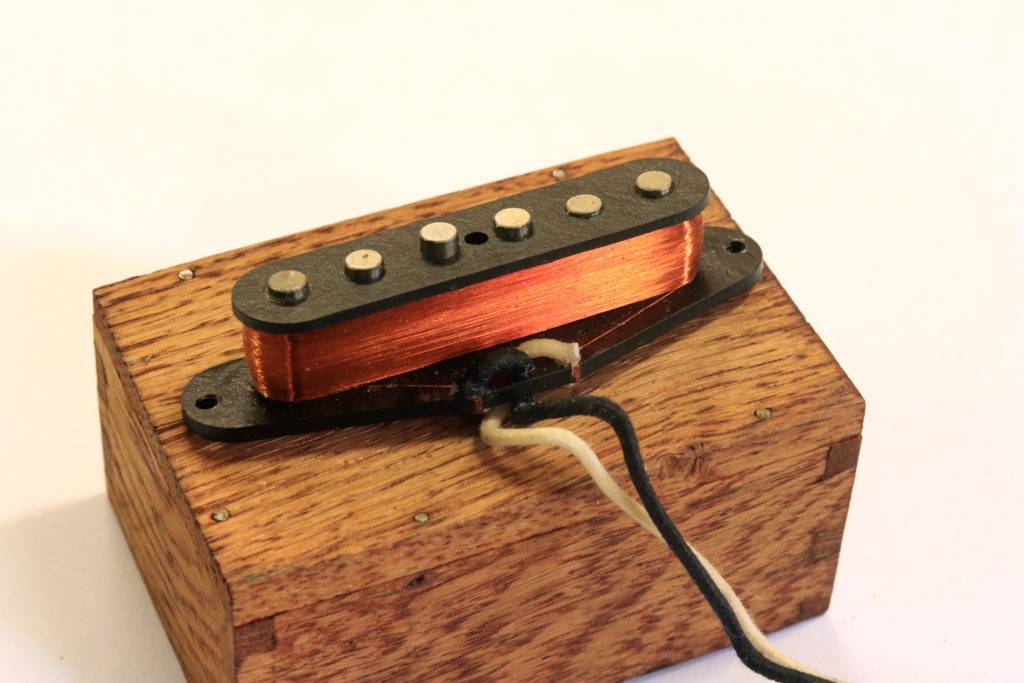
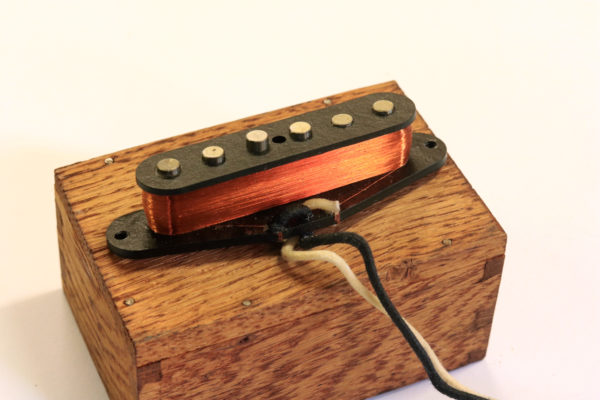
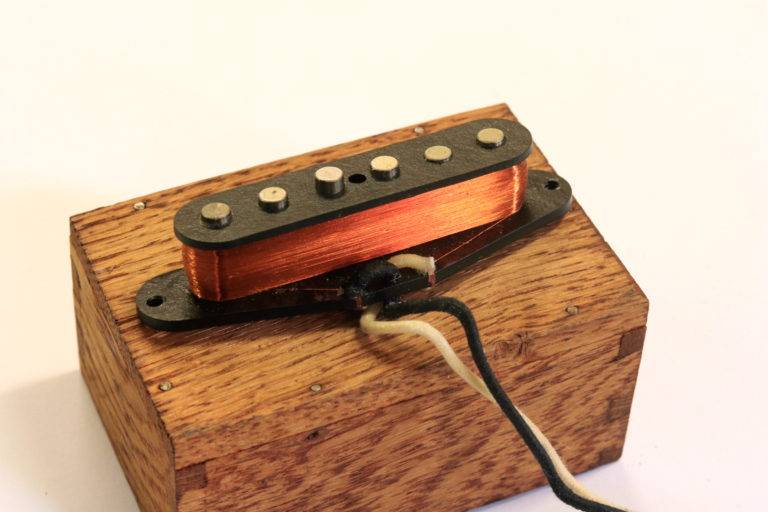
You might have noticed that the color of the wire wound around guitar pickups varies, and wondered what the difference might be. While the soul of the wire is normally copper in most pickup designs, what causes such variations in color are the chemical compounds used in order to insulate it, as well as the thickness of the insulation coat itself.
It has for long been a point of debate in the guitar world, whether such variety in the wire insulation – as well as differences in the sheer gauge (thickness) of the wire – could be responsible for audible changes in a pickup tone.
In a pinch, from a purely physics based point of view, the effectiveness of an insulator will influence the amount of energy dispersion (capacitive loss) between wires, while the overall gauge of the wire will affect important aspects of the overall efficiency of a pickup such as the output (inductance), and the ability to reproduce certain frequencies (resonant peak and inductance).
However, all such properties are ultimately determined by complex interactions between more than one feature of a pickup design, which means that any difference in tone caused by the wire gauge or its insulation, can most likely be tamed or nullified by making certain choices in some of the other steps involved in making a pickup coil (for example the number of winds).
Therefore, while they surely can make a tonal difference, their impact cannot be easily estimated on its own.
The wire wound around a pickup is seen by many as the most defining step when it comes to determining its tone. Variables in winding which significantly affect a pickup sound include:
As noted in the previous section, the machine-wound type of production generally obtains an overall greater consistency on all these variables, which can be more accurately controlled and calibrated for the desired results.
On the other hand, it is argued that the imperfections and irregularities present in hand-wound pickups contribute to the vintage quality of their tone.
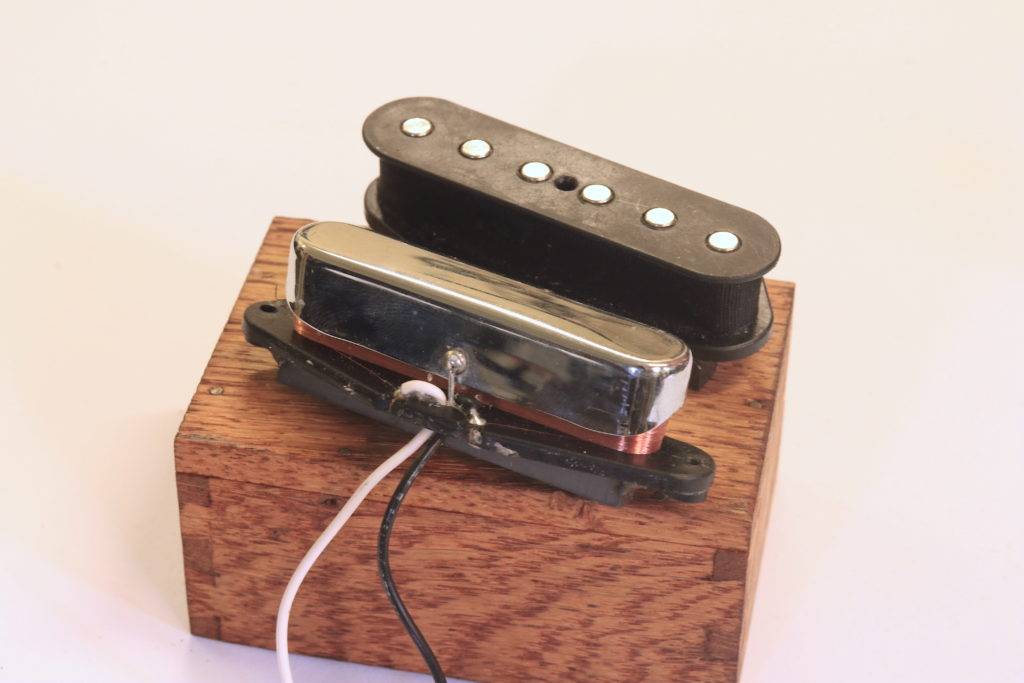
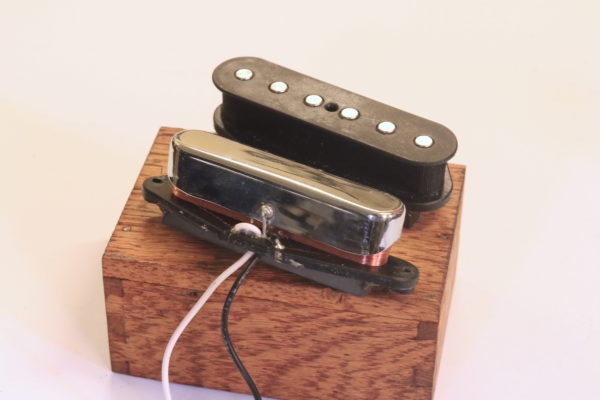
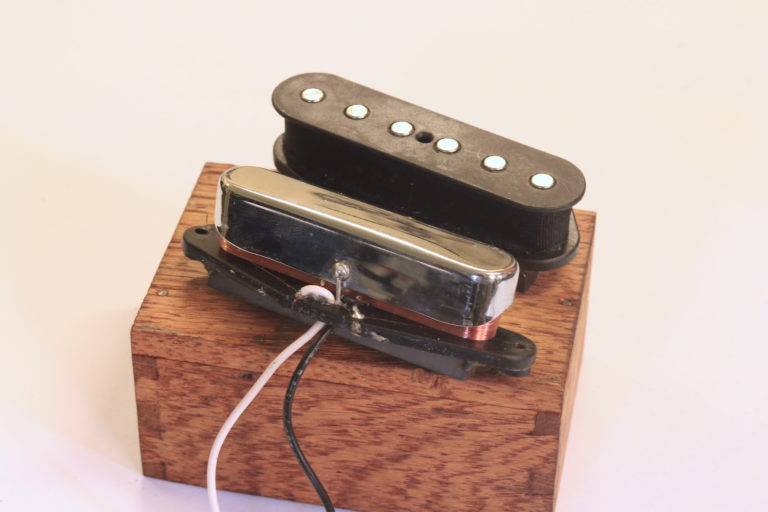
As already discussed , the bobbin plays no active role in the translation of sound into electrical current.
Different bobbin designs can however still have an impact on the performance of the pickup. Particularly, the strength of the output can be influenced by how close the wire and the magnets are positioned.
This is the reason why in some single-coil pickup designs, such as some of the Fender’s Stratocaster and Telecaster ones, the wire is wound directly around the magnet poles, and the bobbin is limited to the two plates keeping the pickup in place and protecting it. On the other hand, traditional humbucking designs, such as those found in Gibson guitars, add an internal wall around the magnets, reducing the output potential but adding protection for the wire.
Another example of the bobbin impacting the pickup sound is in determining the surface area of the coil. This is part of the reason why P90 pickups, which are effectively single-coil pickups, are characterized by a tone closer to PAF humbucker.
Guitar pickups can be further divided into the two categories of active and passive, relating to whether they need an external source of power (usually a 9V battery) in order to boost their electrical output. Traditionally, guitar pickups are passive systems, and until today these are preferred by most musicians for the most common music genres. An important drawback to consider is that passive pickups require the use of stronger magnets to generate a usable amount of output, something that, as we have seen, can hinder the free movement of the strings as a result.
On the other hand, active pickups can afford to use weaker magnets, and by providing a higher level output they usually perform better over long cables and have greater tonal consistency at different volumes – all reasons for which they are often preferred in high gain music genres such as metal.
What is regarded as probably the single biggest factor affecting the tone when it comes to guitar pickups, is the differentiation between single-coil and humbuckers. So let’s discuss their main differences and, even better, listen to them.
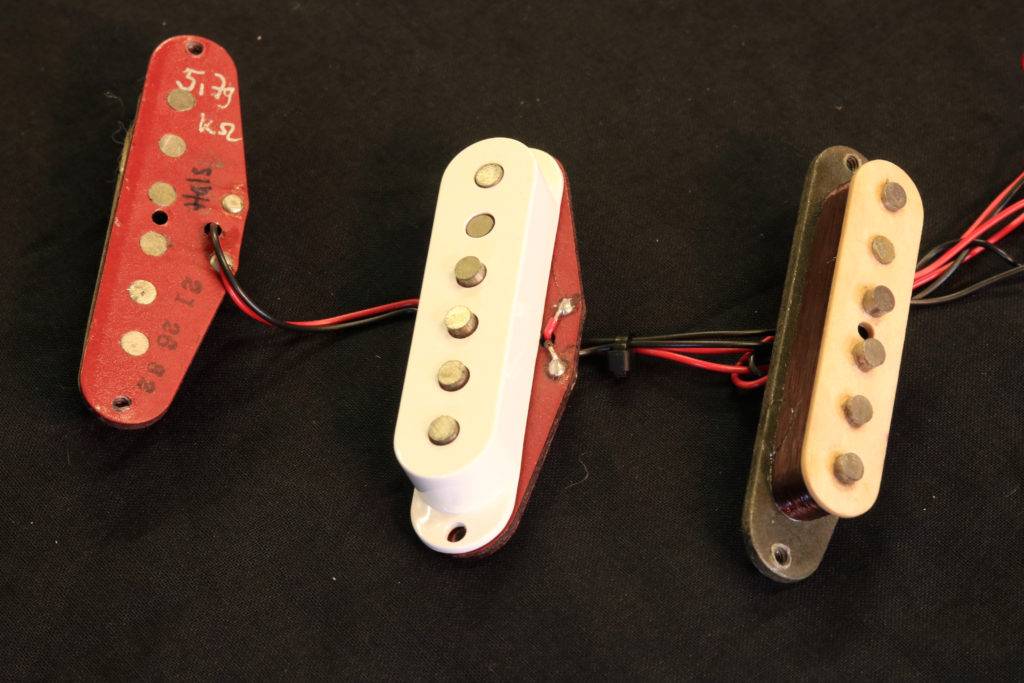
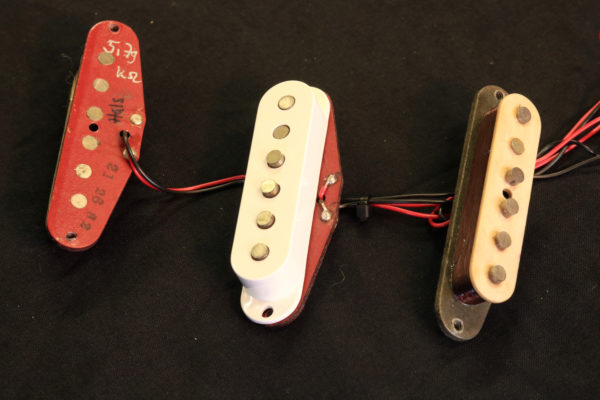
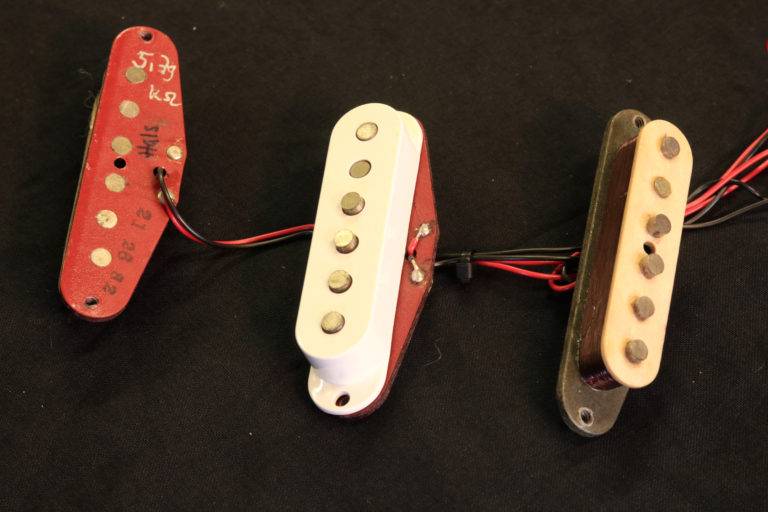
Single-coils were the first type of guitar pickup to be invented and, as the name suggests, consist of a singular coil, wound around one bobbin hosting six magnetic cylinders. These pickups are most typically associated with Fender’s legendary guitars such as the Stratocaster, Telecaster, Jaguar and Mustang. Characterized by bright and crispy tones, their trebly sound easily cut through a mix and gives bite to guitar leads – think Jimi Hendrix or Eric Clapton, for example.
Single coils are most famously used in genres such as Rock & Roll, Classic rock, R&B, Funk, Alternative rock, Country and Surf. You can listen to the real-life sound of a single-coil Stratocaster playing some example tunes in the player below!
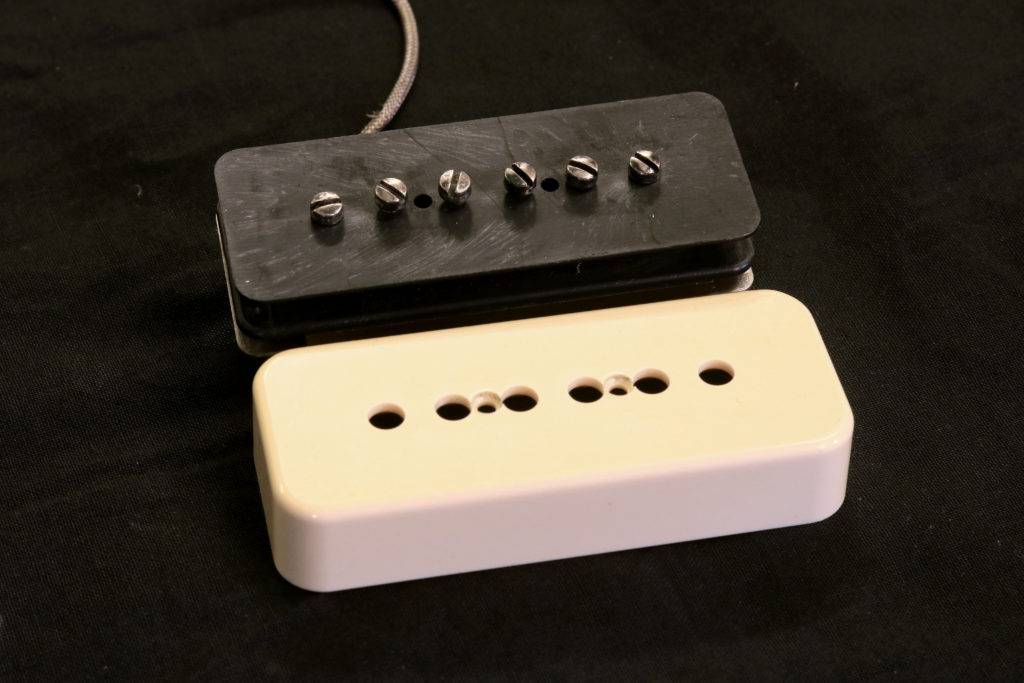
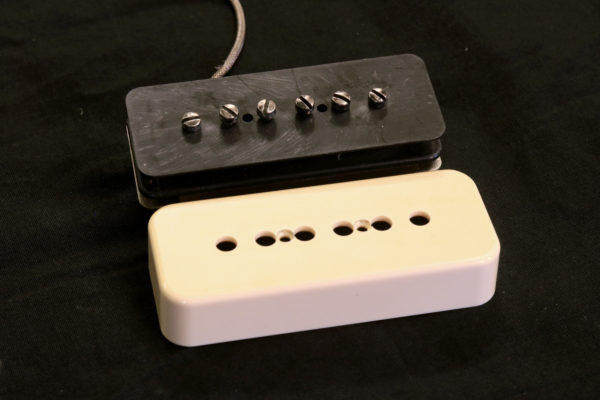
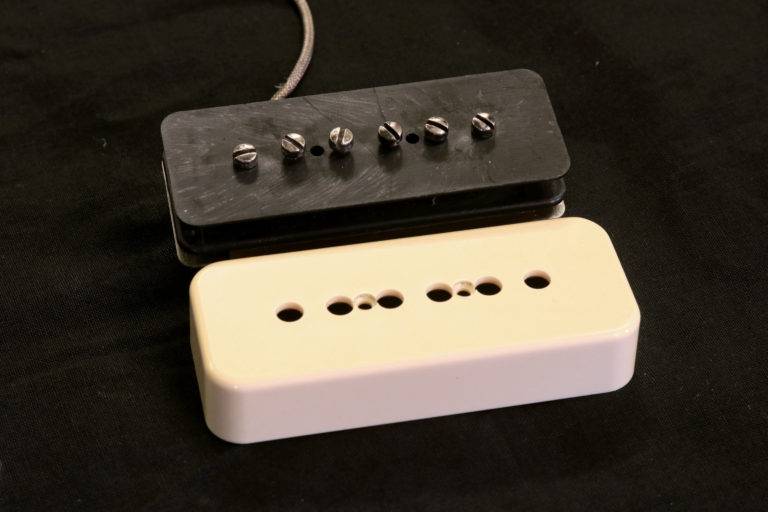
Single-coil pickups come with one big drawback, that is, they are fairly susceptible to picking up noise from surrounding sources and have a natural occurring hum at 60Hz. In order to avoid this very issue humbucker pickups were invented in 1954, based on the idea that two pickup coils wound with inverse polarity and juxtaposed to one another effectively cancel any noise that appears in both.
Effectively constituting a double single-coil system, humbucker pickups both strengthen the magnetic field of the pickup as well as summing the voltages of the two coils and are therefore characterized by higher output. The tone is darker and more nasal compared to that of single-coils and is the signature sound of most Gibson guitars as well as many Ibanez, Hamer, and others.
More commonly found in high gain music genres such as hard rock, heavy metal, and blues rock, they are however versatile enough to also cater to the taste of many jazz musicians. Famous names associated with humbuckers include Carlos Santana, Jimmy Page, Slash, Matt Bellamy and Pat Metheny. To listen to how humbuckers sound on an original Les Paul and compare them to single-coils, you can use the player above. And to compare plenty more of vintage and modern pickups, of all kinds and on different guitars, check out our complete selection!

Few pedals exist out there whose legendary status and hype have peaked as high as that of Klon’s Centaur overdrive. This pedal, worth a couple

As the first guitar pedals hit the market back in the 1960s, they did it as encumbering, hefty boxes that looked as gritty as they